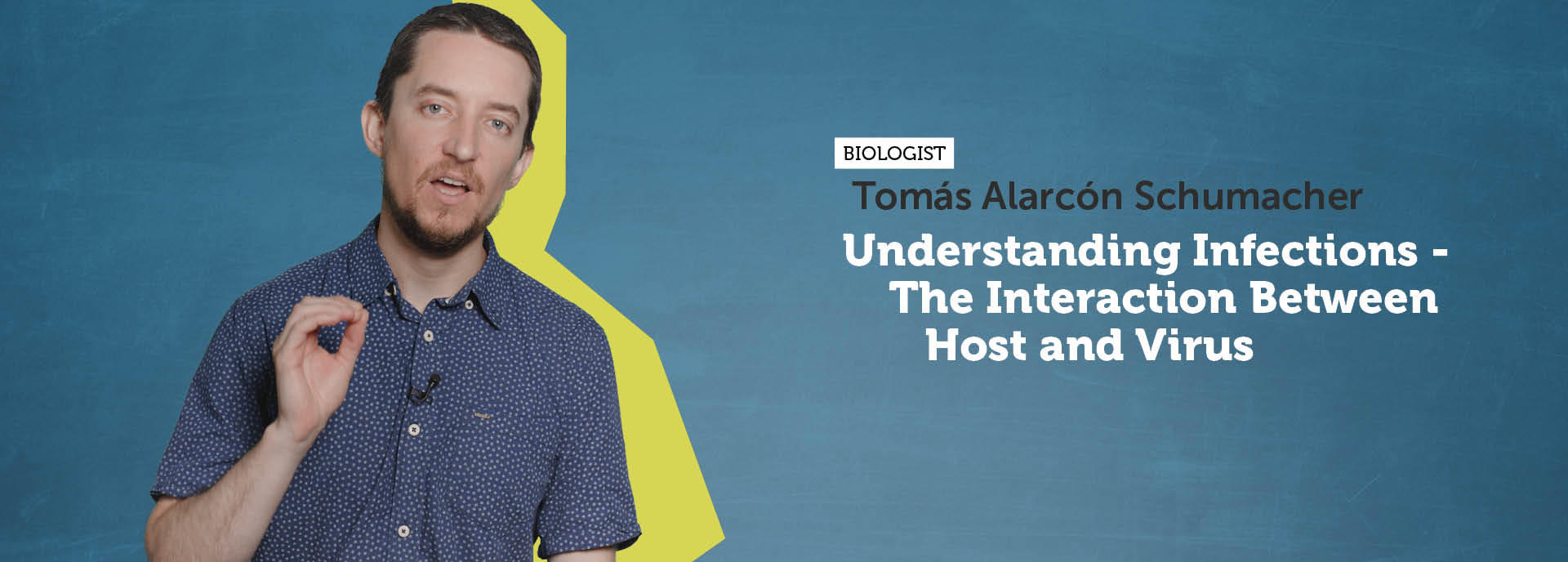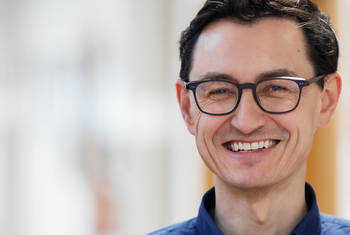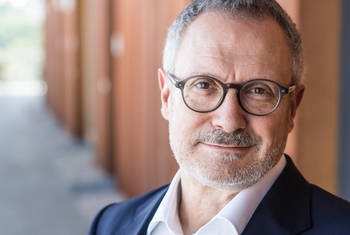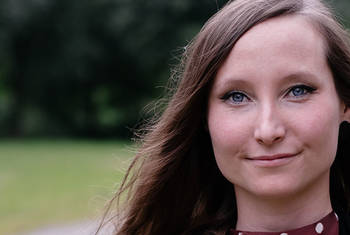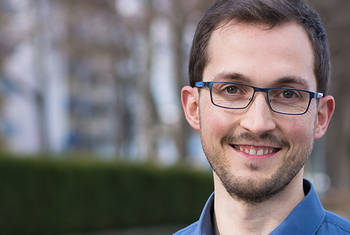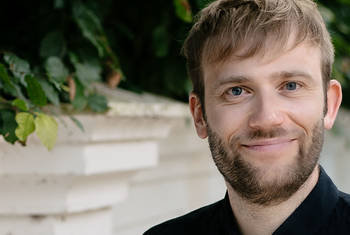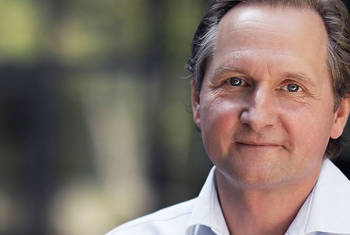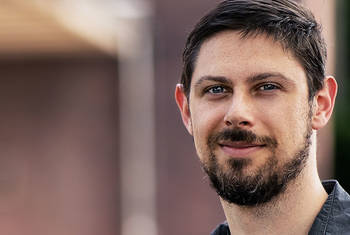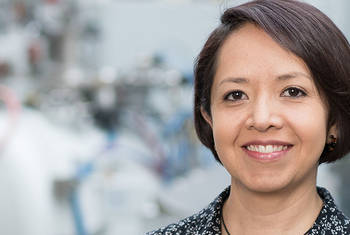Videos of the Week
How Can the History of Earth Sciences Help to Explain Contemporary Distrust Towards Science in General?
Though earth sciences like geology and climate science are of critical importance to our efforts to confront contemporary challenges, they, like all sciences, face unprecedented levels of suspicion and contestation. In this video, ETIENNE BENSON shows us how the history of river studies helps to explain this state of affairs. Benson notes how systematic studies of rivers in the USA have been conducted since the late [...] Watch video
Steel is the backbone of our civilization, but it is also the largest single cause of global warming, through its massive greenhouse gas emissions (about 7% of all global CO₂ emissions). YAN MA introduces here a novel approach to deploy intermittent renewable energy in the form of green ammonia and use it for an unprecedented ironmaking process, i.e., ammonia-based direct reduction. Bypassing ammonia cracking (splitting [...] Watch video
What Can the History of Schizophrenia Teach Us About “Revolutionary” Breakthroughs in Science and Medicine?
Developments hailed as revolutionary breakthroughs in science and medicine regularly fail to realize their original promise. In this video, ALFRED FREEBORN examines a range of historical sources to analyze the insights that the history of schizophrenia can provide into this phenomenon. Freeborn recounts the emergence of a theory in the 1970s and 1980s which associated schizophrenia with larger lateral cerebral ventricles [...] Watch video
Researchers have long recognised that individuals living in cities experience a higher incidence of mental health issues than those living in the countryside. In this video, SONJA SUDIMAC compares the impact of walking in urban and natural environments on the amygdala, a brain region more active under stressful conditions. Sudimac’s study compares amygdala activity in subjects after a one hour walk in a forest versus a [...] Watch video
How Can Magnetic Resonance Imaging (MRI) Help Us to Diagnose and Treat Neurodegenerative Disease?
Magnetic resonance imaging (MRI) is a non invasive technology which can provide very detailed information on the human brain. In this video, NIKOLAUS WEISKOPF explores the insights that MRI can provide on the substantia nigra, a small midbrain structure that plays a crucial role in neurodegenerative conditions like Parkinson’s disease. Employing traditional postmortem histology alongside postmortem and in vivo MRI, [...] Watch video
Why Do Students Struggle With the Transition to Post-Secondary Education in Math Intensive STEM Fields?
Math intensive STEM courses at university have very high dropout rates. In this video, DARIA BENDEN explores some of the factors that underlie this. Conducting a longitudinal study, Benden identifies a sharp motivational drop in the very early days (weeks 2-3) of students’ transition to post secondary education in math intensive STEM fields. She notes that motivation remains stable after this initial shock which tends [...] Watch video
Light, strong and abundant, aluminum and its alloys are widely used in constructions, consumer electronics, and for vehicles including cars, ships, and aerospace. In this video, HUAN ZHAO explores a phenomenon which results in the weakening of these materials, hydrogen embrittlement. Employing cryogenic-transfer atom probe tomography, Zhao is able to provide a three dimensional analysis of how hydrogen is located within [...] Watch video
Though we are familiar with the phenomenon whereby a sudden drop in temperature precedes a thunderstorm, scientific understanding of these “cold pools” has been limited. In this video, FELIX AMENT analyzes the extensive insights that the FESSTVaL (Field Experiment on Sub-mesoscale Spatio-temporal Variability in Lindenberg) campaigns have provided into cold pools. Forming a broad observation network which involved [...] Watch video
Scientists have long debated the extent to which nature and nurture shape who we are. In this video, SOFIE VALK seeks to cast light on this debate. Employing methods including neuroimaging techniques, twin and genotype samples, comparison with primate brains and machine learning, Valk argues that both genetic and environmental factors shape the human brain, impacting human thoughts and feelings. Her research helps to [...] Watch video
Technologies like sonar or ultrasound demonstrate that sound can contribute to society in ways that are not easily visible. In this video, NOA HEGESH explores the notable role that sound played in early and medieval China in areas as diverse as the calendar, weights and measures and prognostication. Identifying and translating relevant texts and artifacts before situating them in context, Hegesh highlights the ways that [...] Watch video
Owning and knowing are concepts that are generally classified separately, the former associated with law and property while the latter falls within the remit of science and research. In this video, ANNAPURNA MAMIDIPUDI explores the ways in which artisanal production undermines this separation. This separation leads to a world in which knowledge can almost exclusively be owned as property. Mamidipudi highlights the fact [...] Watch video
When it is highly publicized that a product is defective, contaminated or harmful, this is known as a product harm crisis. In this video HELENA PERRONE explores how consumers react to such an event. Focusing on the French “mad cow” crisis which began in 2000 and combining a theoretical model with a comprehensive dataset, Perrone finds that small drops in sales in response to such a crisis can conceal consumers’ real [...] Watch video
Economic preferences that relate to time (patience), risk taking and social interaction have been shown to play an important role in life success. In this video, MATTHIAS SUTTER explores how these economic preferences are formed in early life and adolescence. Carrying out economic experiments and collecting survey data among 500 families in rural Bangladesh, Sutter finds that children adopt almost entirely the economic [...] Watch video
In considering their impact on climate change, individuals naturally think about consumption. In this video, HENDRIK HAKENES argues that people need to give equal weight to their investments. Hakenes constructs a mathematical model which allows him to explore the effectiveness of different decisions around consumption and investment. Though conventional wisdom suggests that reducing consumption takes priority, the [...] Watch video
A student of mathematics at university is likely to encounter very similar material in the early years whether they enroll in Berlin, Beijing or Boston. In this video, MATTEO VALLERIANI asks how this homogenization of scientific knowledge occurs. Looking at various aspects of mathematical study at universities between the 12th and 17th centuries, Valleriani’s work combines history, philosophy and computer science in the [...] Watch video
Ongoing crises around the world prompting refugees to flee their homelands beg us to consider the economic effects of international migration. In this video, ANTONIO CICCONE explores the case of mass migration to what would become West Germany in the immediate aftermath of World War II. Comparing the French occupation zone which restricted access to refugees with the US zone which accepted them, Ciccone and Jan Nimczik [...] Watch video
When one comes before a court, how can the chances of success be assessed? In this video, CHRISTOPH ENGEL considers the impact of the makeup of the German Constitutional Court (in terms of the panel of justices presiding) on a plaintiff’s prospects. Focusing on the effect of the justices’ familiarity with one another both before and after recompositions of the court, Engel identifies a positive relationship between [...] Watch video
In developing economies, significant amounts of financial intermediation take place in foreign currency, a phenomenon referred to as dollarization. In this video, HUSNU DALGIC analyzes dollarization and its impacts. Looking at data on households and companies as well as broader economic trends, Dalgic’s work calls into question the broadly held assumption that dollarization leads to financial instability. Defining [...] Watch video
Global warming means that mankind needs to find ways to remove carbon from the atmosphere. In this video, SILVIA VIDAL MELGOSA highlights the fact that microalgae remove as much carbon as all plants on land and considers what we can learn from these natural processes. Collecting samples during a three month microalgae bloom in the North Sea, Vidal Melgosa underlines the fascinating role played by the polysaccharide [...] Watch video
Algorithms and artificial intelligence are playing an increasing role in public decision making. In this video, PASCAL LANGENBACH analyzes the ways in which this aspect of digitalization affects perceptions of fairness. Looking at the contexts of predictive policing, school admissions and refugee location, Langenbach examines four different procedural models ranging from situations where human actors decide alone to [...] Watch video
Sea grasses play an important role in the global carbon cycle. In this video, SINA SCHORN investigates the mechanisms by which the Mediterranean sea grass Posidonia oceanica stores carbon while emitting methane. Employing methods including flex measurements and substrate addition experiments, among Schorn’s most important findings is the fact that sediments in which sea grasses have died off can continue to emit methane [...] Watch video
What costs are involved when a worker loses their job? In this video, Hannah Illing compares the costs of losing a job for men and women. Forming statistical pairs to undertake a valid comparison, Illing’s research shows that women bear substantially higher costs than men when they lose a job and this can be exacerbated by their having children. Illing also ponders how Covid-19 might also have an impact in this regard, [...] Watch video
Evaluation, of job candidates for example, often takes place in a sequence. In this video, JONAS RADBRUCH investigates how this sequential process influences outcomes. Studying data from an admissions as well as a hiring process, the work demonstrates that the immediately preceding candidate in a sequence has a very striking influence on the chances of success for the person that follows. The research calls for more work [...] Watch video
Where research on migration has classically centered on young people, studies of aging have generally focused on particular places. In this video, MEGHA AMRITH and her research group bring these two processes together, exploring the implications of growing older across borders, in a globalized world. Combining ethnographic field work across multiple sites with broader cultural studies, the research highlights the fact [...] Watch video
One of the most disputed issues in historical-comparative linguistics is the origin of the Japanese language and the question of whether it is related to the Transeurasian languages. MARTINE ROBBEETS has already shown in past research that it is possible to find a small core of evidence that relates Japanese as a daughter language of Transeurasian. This, she explains in this video, leads to new questions: How and why did [...] Watch video
In popular culture as in traditional archaeology, the tropical forest has been assumed to represent an environment inhospitable to humans. In this video, PATRICK ROBERTS challenges this view, demonstrating not only that Homo sapiens moved into tropical forests much earlier than previously thought but also that significant agricultural and urban societies existed in these places in the ancient past. Employing techniques [...] Watch video
The classic image that tourists and travelers should only leave footprints and take photos is put into question by CARSTEN WERGINs academic investigation of how tourism has changed the world. In this video, he describes his interest in the question of how tourism impacts on particular places and people. In his field studies and during participant observations he has found that tourism is not only a global industry, it [...] Watch video
Modern humans colonized the whole planet and replaced all other hominids, such as Neanderthals. This evolvement raises interesting evolutionary questions concerning both species. The paleoanthropological research presented in this video looks at a moment in time when both co-existed. In order to find out about the differences between them, JEAN-JACQUES HUBLIN looks at both species’ use of technology, behavior, and [...] Watch video
More people from more places are migrating to more places, leading to greater linguistic, religious and ethnic diversity, especially in urban areas. In this video, STEVEN VERTOVEC analyzes this super-diversification and considers how societies can best respond to the challenges it presents. With sources ranging from U.N. and World Bank migration data to more ethnographic, everyday research, Vertovec observes that [...] Watch video
It is very difficult to learn something new if you haven’t unlearned what you have done before. In this video, CAROLIN GÖRZIG shows how we can better understand and influence the processes by which terrorist groups learn and unlearn violence. Drawing on insights provided by the deradicalization of organizations like the Provisional IRA (Irish Republican Army), and with fieldwork ongoing in territories including [...] Watch video
What New Insights Can Archeology Provide Into Homo sapiens’ Emergence from Africa?
Traditional theory holds that Homo sapiens’ first moved Out of Africa into Eurasia along coastal routes some 60,000 years ago. In this video, MICHAEL PETRAGLIA explodes this theory demonstrating that modern humans emerged from Africa much earlier and, at least some of the time, via inland routes. Employing satellite imagery to identify ancient rivers and lakes in what are present-day desert regions, the team pinpointed [...] Watch video
Technologies like sonar or ultrasound demonstrate that sound can contribute to society in ways that are not easily visible. In this video, NOA HEGESH explores the notable role that sound played in early and medieval China in areas as diverse as the calendar, weights and measures and prognostication. Identifying and translating relevant texts and artifacts before situating them in context, Hegesh highlights the ways that [...] Watch video
Owning and knowing are concepts that are generally classified separately, the former associated with law and property while the latter falls within the remit of science and research. In this video, ANNAPURNA MAMIDIPUDI explores the ways in which artisanal production undermines this separation. This separation leads to a world in which knowledge can almost exclusively be owned as property. Mamidipudi highlights the fact [...] Watch video
A student of mathematics at university is likely to encounter very similar material in the early years whether they enroll in Berlin, Beijing or Boston. In this video, MATTEO VALLERIANI asks how this homogenization of scientific knowledge occurs. Looking at various aspects of mathematical study at universities between the 12th and 17th centuries, Valleriani’s work combines history, philosophy and computer science in the [...] Watch video
Chinese local gazetteers have been recording local information since the 7th Century and the corpus of texts that they have produced provides an important resource for scholars. In this video, DAGMAR SCHÄFER explores the broader influence of the local gazetteers’ treatment of disasters. Employing digital humanities and the [...] Watch video
Research has shown that the practice of comparing is determined more by the actors doing the comparing than by the phenomena being compared. In this video, focusing on Cuba in the long nineteenth century, ANGELIKA EPPLE explores how comparisons based on race and skin color evolved in parallel with the changing makeup of that society. With contemporary discourse witnessing an upsurge in race-based comparisons keen to [...] Watch video
How Can We Quantify the Immediate and Lingering Impact of Genocide on Local Populations?
Mass killings generally occur in settings of armed conflict where it is very difficult or impossible to collect official data on births, deaths and marriages. In this video, DIEGO ALBUREZ-GUTIERREZ confronts this challenge by focusing on the mass killings of the Maya Achi people which took place during the Guatemalan Civil War in the 1980s. Using a novel approach, the “Extended Genealogy Method”, Alburez-Gutierrez [...] Watch video
For music artists, the marketing possibilities of digital media have opened up new opportunities independent from the major music industry. MICHAEL AHLERS has examined this process using the German Gangsta rapper Kollegah as example. As Ahlers describes in this video, his research team conducted an interdisciplinary two-part study in focusing on Kollegah’s skill set and knowledge in one part and in the other one on the [...] Watch video
Previous research has shown that single mothers experience disproportionately higher rates of physical and mental illness compared to partnered mothers. In this video, moving beyond that comparative focus, MINE KÜHN analyzes how the transition into and length of single motherhood impacts health and wellbeing, as well as the factors that determine those impacts. By investigating changes in single motherhood over time [...] Watch video
How can we best implement digital learning in schools? In this video, FRANK J.MÜLLER argues that the Norwegian Digital Learning Arena’s (NDLA) work with Open Educational Resources offers a highly instructive case study. Interviewing professionals and companies working with NDLA as well as school book publishers who have opposed the platform since its introduction in 2006, Müller shows how Norway has dealt with [...] Watch video
Aesthetic experiences make a vital contribution to our lives. In this video, focusing on responses to artwork, architecture and natural landscapes, EDWARD VESSEL explores how aesthetic experiences function in the brain. Employing functional Magnetic Resonance Imaging (fMRI), Vessel attempts to correlate subjects’ aesthetic responses with data from two brain regions, the ventral occipitotemporal cortex and the default [...] Watch video
The island of Mayotte forms part of the Comoros archipelago in the Indian Ocean. While Mayotte is part of France and the EU, other islands of the archipelago like Grande Comore and Anjouan are not. In this video, REMI TCHOKOTHE analyzes the tensions that this situation has caused, focusing on how they have been expressed in literary works. Employing close readings of writings by Nassur Attoumani and Soeuf Elbadawi [...] Watch video
Scientists have long debated the extent to which nature and nurture shape who we are. In this video, SOFIE VALK seeks to cast light on this debate. Employing methods including neuroimaging techniques, twin and genotype samples, comparison with primate brains and machine learning, Valk argues that both genetic and environmental factors shape the human brain, impacting human thoughts and feelings. Her research helps to [...] Watch video
Sea grasses play an important role in the global carbon cycle. In this video, SINA SCHORN investigates the mechanisms by which the Mediterranean sea grass Posidonia oceanica stores carbon while emitting methane. Employing methods including flex measurements and substrate addition experiments, among Schorn’s most important findings is the fact that sediments in which sea grasses have died off can continue to emit methane [...] Watch video
What Mechanisms Underlie the Interaction Between a Virus and its Host During an Infection?
Traditionally, viruses have been viewed as little more than killing machines. In this video, TOMÁS ALARCÓN SCHUMACHER shows how certain viral infections can have a positive effect on their hosts’ evolutionary trajectories. Focusing on chronic infections in archaeal bacteria, Schumacher employs techniques including quantitative PCR, RNA sequencing and proteomics. Among his more striking findings are that the virus can [...] Watch video
What Is The Relationship Between Sea Grasses And The Microbial Communities That Live In Their Sediments?
Seagrasses evolved from terrestrial plants on at least 3 separate occasions. We know that land plants interact with their microbial communities in their soils to recruit symbionts. In this video, EMILIA SOGIN investigates whether seagrasses also retained their interactions with the microbial communities that live in their sediments. Conducting metabolomic analyses of sediment porewater as well as incubation experiments [...] Watch video
When memorable experiences occur, a particular subset of neurons is activated in the brain. In this video, ALESSIO ATTARDO analyzes how these engram neurons are created. Imaging the synapse network through which neurons connect and communicate, Attardo is able to identify distinctions between those that go on to become engram neurons and those which do not. Focusing on the hippocampus, this work calls into question [...] Watch video
Organic mass in the surface ocean is made up of 50% polysaccharides which are consumed by bacteria. In this video, GRETA GILJAN examines how bacterial consumption of polysaccharides takes place as well as its carbon impact. Giljan employs fluorescently labeled polysaccharides (FLA-PS) to show how different bacteria use variant methods to take up polysaccharides at particular times of year. The research further [...] Watch video
Unlike other human infectious diseases (e.g. tuberculosis, HIV), malaria is transmitted between humans via mosquitoes. In this video, ELENA LEVASHINA analyzes the mechanisms of how mosquitoes transmit malaria. Combining population studies conducted in the field with mathematical approaches, Levashina finds that mosquitoes with particular genetic characteristics transmit malaria more effectively than others. Though further [...] Watch video
T cells are an important component of the body’s immune system. As ERIKA PEARCE explains, there are several types of T cells which form consecutively during the immune response and serve different purposes. Effector T cells combat pathogens from infections or tumors while memory T cells provide protective immunity to prevent re-infection or reoccurring cancer. The research presented in this video investigates how the [...] Watch video
The next pandemic seems likely to result from a bacterial pathogen. In this video, ANDREAS PESCHEL explores how we can effectively fight bacterial pathogens, especially where they are resistant to antibiotics. Adopting an interdisciplinary approach with colleagues from computational, clinical and compound focused sciences, Peschel’s research focuses on the bacteria Staphylococcus aureus commonly found in the human nose. [...] Watch video
Daylength on Earth has increased very gradually from something like 4-12 hours 4.5 billion year ago to 24 hours at present. In this video, JUDITH KLATT explores whether the emergence of oxygen on our planet, vital to the evolution of life, can be linked to changes in the Earth’s rotation rate (daylength). Klatt’s study focuses on the release of oxygen from microbial mats. Modeling and testing in the Middle Island [...] Watch video
In electronic devices, material imperfections play a key role in determining lifespan as well as in safety considerations. In this video, CHRISTIAN LIEBSCHER puts such defects under the microscope so that we can better understand their atomic structure. Focusing on grain boundaries at which different crystals join together and using transmission electron microscopy, Liebscher explains how this research can bring about [...] Watch video
One very promising way of producing energy in an environmentally friendly manner is via hydrogen fuel cells. In this video, ALBA GARZÓN MANJÓN explains that a fundamental barrier to the widespread adoption of this technology is the prohibitive cost of the noble metals that act as catalysts in the fuel cell. Garzón Manjón’s research seeks to identify alternatives, centering her search on high entropy alloy materials. [...] Watch video
Streptococcus pneumoniae kills millions of people worldwide. For the subgroup serotype 8, prevalent in the United States and Western Europe, there is no vaccine to date. In this video, PETER H. SEEBERGER explains the approach of his research group to create a synthetic sugar vaccine against this bacterial infection that works in mice. They relied on synthetic chemistry to assemble sugar chains from monomers; the [...] Watch video
Why and How Do Plants Emit Volatile Compounds When Defending Themselves Against Herbivores?
Plants have at least two ways of defending themselves against herbivores. They can do so directly by producing toxins or compounds that are anti-digestive, or they can indirectly defend themselves by emitting volatile compounds that attract predators and parasitoids of the herbivores. MEREDITH SCHUMANN investigates these indirect defenses. As she explains in this video, there are both fast and slow components to [...] Watch video
Rainfall has a large impact on how life functions on earth and this, in turn, has great implications for both the ecosystem and human well-being. The research presented in this video investigates the ways in which the pollution of the air system affects the working of clouds and how they produce rain. By measuring the aerosol particles in clouds in specific areas, MEINRAT O. ANDREAE explains, the research team discovered [...] Watch video
Mankind is increasingly polluting the atmosphere across the planet. The research detailed in this video is interested in the questions of how this pollution is generated and how it affects the health of people. The investigators found, as JOS LELIEVELD explains, that air pollution leads to millions of premature deaths since it causes, for instance, fatal cerebrovascular and respiratory diseases. The researchers also [...] Watch video
Our planet’s cloudiness has been heretofore understood as being controlled by the slowly varying, large scale, atmospheric circulation known as the Hadley cell. In this video, CLAUDIA STEPHAN argues that this model is overly simplistic. Bringing recent measurements taken over the Atlantic into dialogue with observational data gathered in Darwin on gravity waves, Stephan suggests that relationships between clouds and [...] Watch video
Plants use certain chemical compounds to defend themselves against animals that feed on them. As JONATHAN GERSHENZON explains in this video, dandelions are a very good model to research the defences of plants because they are especially robust. The research team therefore investigated dandelions to identify the compound that protects the roots from being damaged by insects. They studied dandelions from different regions [...] Watch video
Ongoing crises around the world prompting refugees to flee their homelands beg us to consider the economic effects of international migration. In this video, ANTONIO CICCONE explores the case of mass migration to what would become West Germany in the immediate aftermath of World War II. Comparing the French occupation zone which restricted access to refugees with the US zone which accepted them, Ciccone and Jan Nimczik [...] Watch video
Economic preferences that relate to time (patience), risk taking and social interaction have been shown to play an important role in life success. In this video, MATTHIAS SUTTER explores how these economic preferences are formed in early life and adolescence. Carrying out economic experiments and collecting survey data among 500 families in rural Bangladesh, Sutter finds that children adopt almost entirely the economic [...] Watch video
In this video, MARKO SARSTEDT analyzes the long-term effects of ambient scents in sensory rich environments. Having identified an ideal industry partner in the German railway corporation, die Deutsche Bahn, the research team deployed a specially created scent in train compartments over a 4 month period. Regular commuters were surveyed about their perceptions of service though 9 study waves. As expected, assessments of the [...] Watch video
What costs are involved when a worker loses their job? In this video, Hannah Illing compares the costs of losing a job for men and women. Forming statistical pairs to undertake a valid comparison, Illing’s research shows that women bear substantially higher costs than men when they lose a job and this can be exacerbated by their having children. Illing also ponders how Covid-19 might also have an impact in this regard, [...] Watch video
Evaluation, of job candidates for example, often takes place in a sequence. In this video, JONAS RADBRUCH investigates how this sequential process influences outcomes. Studying data from an admissions as well as a hiring process, the work demonstrates that the immediately preceding candidate in a sequence has a very striking influence on the chances of success for the person that follows. The research calls for more work [...] Watch video
External stimuli are increasingly prevalent in the digital age, competing for our attention, urging us to action. In this video, MATTHIAS PELSTER explores the extent to which attention triggers (like push notifications) increase risk taking in financial markets. Focusing on customers of a large broker, Arnold, Pelster & Subrahmanyam are able to use a difference-in-differences approach to compare the behaviors of those who [...] Watch video
Caseworkers try to help unemployed people to find work, providing support and assistance in regularly scheduled meetings. In this video, AMELIE SCHIPROWSKI seeks to quantify the economic value of these caseworker meetings. Relying on data from Swiss unemployment registers and focusing on the impact of unplanned caseworker absences, Schiprowski identifies a clear correlation between the frequency of caseworker meetings and [...] Watch video
While the environmental benefits of installing photovoltaic systems are clear, the costs can remain off-putting for private households. In this video, SVEN MÜLLER explores the relevance of the peer effect (neighbors already having the technology) in a decision to install a photovoltaic system. Establishing an installed base and considering fixed effects alongside an instrumental variable approach, Müller finds that peer [...] Watch video
What Information Should Smart Meters Provide To Effectively Reduce Energy Consumption?
The rollout of smart electricity meters is gathering pace in the EU as in the US. In this video, ANDREAS GERSTER asks what information smart meters should provide to bring about an optimal reduction in energy consumption. Comparing the effectiveness of aggregate data and appliance specific feedback, Gerster shows that more detailed information can help households to significantly limit their electricity use. Highlighting [...] Watch video
With longevity increasing and public pensions shrinking, old age poverty is a pressing issue in many economies. Noting that this issue has particular impact on women, in this video, HAN YE explores the extent to which additional pension benefit affects workers’ decisions on when to retire. Focusing on a German pension subsidy scheme introduced in 1992, Han Ye’s study breaks new ground in its isolation of the causal [...] Watch video
The share of Chinese people with college education and the wage premium that they earn has increased dramatically since 1990. In this video, LEI LI explores the factors underlying this and argues that it can be partially attributed to the importation of machinery. Analyzing population data from the 330 Chinese prefectures and exploring regional differences in machinery importation, Li finds that the importation of [...] Watch video
Different factors influence how households invest their savings. In this video, CHRISTIAN ZIMPELMANN explores the role that subjective beliefs about the stock market play in household investment decisions. Gathering data on stock holdings in the Netherlands from administrative data, Zimpelmann brings this into dialogue with Dutch households’ expectations about the stock market gleaned from surveys. Optimistic beliefs [...] Watch video
When one comes before a court, how can the chances of success be assessed? In this video, CHRISTOPH ENGEL considers the impact of the makeup of the German Constitutional Court (in terms of the panel of justices presiding) on a plaintiff’s prospects. Focusing on the effect of the justices’ familiarity with one another both before and after recompositions of the court, Engel identifies a positive relationship between [...] Watch video
Can Legal Reforms Effectively Combat the Negative Consequences of Child Marriage?
With proven detrimental impacts on women and their offspring, preventing child marriage is an important aspect of the struggle to reduce global poverty.In this video, CRISTINA BELLÉS-OBRERO analyzes the effectiveness of legislative measures designed to combat child marriage in Mexico since 2014. Taking advantage of the fact that the laws were implemented gradually by the different Mexican states, applying a ‘difference [...] Watch video
Borders have been conceptualized in two main ways. The “static border” is the fixed line on a map that separates one country from another. Post 1989, the concept of the “disappearing border” came into fashion, the notion that borders and their influence onhuman mobility would become increasingly irrelevant. In this video, AYELET SHACHAR argues that though contemporary borders are not static, they have certainly [...] Watch video
In one third of countries worldwide, family law is created, administered and applied not by the state but by individual religious communities. In this video, DÖRTHE ENGELCKE explores how this system operates in Jordan and considers the impact that it has on potential reform. Focusing on the Byzantine family code (the family law applied by the Greek Orthodox community, Jordan’s largest and oldest Christian community), [...] Watch video
Rather than referring to laws written and developed by the state, judges in Saudi Arabia largely rely on Islamic jurisprudence and the interpretation of sacred texts. In this video, DOMINIK KRELL explores how legal reform can occur in these circumstances. Focusing on a form of divorce called khulʿ which is initiated by the wife and combining textual study with fieldwork interviews, he finds that Saudi jurists were able [...] Watch video
To what extent are security agencies accessing our communications and other data? In this video, RALF POSCHER proposes and explains a mechanism by which we can answer this question. Poscher outlines how we can go about constructing a surveillance barometer. This would reveal a society’s surveillance score based on the amount and the intensity of surveillance activities undertaken by security agencies. Providing helpful [...] Watch video
The importance of the human right to work is recognized by its inclusion in the Universal Declaration of Human Rights. In this video, NICOLAS BUENO proposes that we reflect on its necessity and reimagine it as something more ambitious, as a new human right to freedom from work. Analyzing the historical context in which labor and fundamental economic rights emerged, Bueno observes that they were conceived to protect not [...] Watch video
How does religious normative knowledge spread throughout the world? How is such normative knowledge translated, adapted and regionalized in particular geographical domains? In this video, THOMAS DUVE analyzes the processes by which normative knowledge is globalized and localized with a specific focus on religious knowledge. Focusing on places that came into contact with the Iberian empires in the early modern period, Duve [...] Watch video
What Can We Learn From the Fully Virtual Shareholder Meetings That Have Taken Place During the Corona Pandemic?
The Corona pandemic made it impossible to hold general shareholder meetings in the traditional manner. In this video, ELENA DUBOVITSKAYA explores how German corporate law responded to this dilemma through what she refers to as The Covid Act. Out of necessity, the act bypassed the shareholder’s heretofore irrevocable right to be physically present at the general meeting. Dubovitskaya examines the extent to which the [...] Watch video
Current pharmacological treatments for bone cancers like multiple myeloma have proven ineffective at healing bones or regenerating bone tissue. In this video, FRANZISKA JUNDT explores the extent to which physical stimuli and physical activity could represent effective treatment strategies for such conditions. Jundt explains how work with mice infected with tumor cells was followed up by a pilot clinical study on patients [...] Watch video
Vital steps have been taken in recent years in our understanding of how the cerebral cortex functions at the cellular level. In this video, MATTHEW LARKUM analyzes the role that memory plays in this context. Employing techniques including electrical and optical recordings as well as chemogenetics in experiments with live animals, Larkum’s lab has demonstrated that the medial temporal lobe projects to layer one of the [...] Watch video
Our skin epidermis consists of many lifelong regenerating cell layers which provide a barrier that prevents water loss and protects us from heat and radiation. In this video, CARIEN NIESSEN explores why these cells fail to regenerate in cases of disease or with age. Paying particular attention to the influence of cell structure, Niessen’s method focuses on three scale lengths: protein, cell and organ. Outlining the ways [...] Watch video
Our immune system has evolved many different cells with different functions to prevent infections. One of these functions is cellular cytotoxicity; this means that cells are able to kill other cells. Natural killer cells (NK cells) are one type of these cells that can achieve cytotoxicity. CARSTEN WATZL experiments with NK cells in order to find out how they protect themselves from their own cytotoxic machinery and how [...] Watch video
How Can the Characteristics of Continuum Robots Be Optimized for a Specific Medical Application?
The use of continuum robots – robots that are not composed of rigid links and joints but are continuously bending structures – opens up completely new possibilities for surgery: With this tool surgeons can reach locations in the human body which they would not be able to reach with traditional surgical instruments. This enables them to e.g. remove brain tumors in a minimally invasive way. There are a vast number of [...] Watch video
How Can Functional Magnetic Resonance Imaging Help Detect, Visualize, and Treat Strokes?
Stroke is one of the most frequent neurological disorders, befalling over 250.000 persons each year in Germany alone. The research underlying this video explores the role of non-invasive methods for stroke diagnosis and therapy. The use of functional Magnetic Resonance Imaging (fMRI), which produces image-signals on the basis of the oxygen-concentration in the blood, allows for the detection of increased or decreased [...] Watch video
How Can Biomaterial Scaffolds Help to Repair Damaged Spinal Cords by Guiding Nerves to Grow Across the Injury?
In the 1980s researchers showed that damaged nerves in the spinal cord have the ability to regrow. Chemical engineers contribute to the field of spinal cord repair by developing biomaterial scaffolds that support cell and nerve growth inside the body after an injury. In the research project explained by LAURA DE LAPORTE in this video, such scaffolds were developed and tested: The special architecture of the developed [...] Watch video
Almost everybody has to deal with stress sometimes. But what is stress? It is a reaction of the body to a challenging situation which elicits a stress response in the body. Stress is also a risk factor for disease and this is an area that MATHIAS V. SCHMIDT and his research team focus on. The most prominent stress-related disorders are psychiatric disorders and metabolic disorders. Specifically, as Schmidt explains in [...] Watch video
Steel is the backbone of our civilization, but it is also the largest single cause of global warming, through its massive greenhouse gas emissions (about 7% of all global CO₂ emissions). YAN MA introduces here a novel approach to deploy intermittent renewable energy in the form of green ammonia and use it for an unprecedented ironmaking process, i.e., ammonia-based direct reduction. Bypassing ammonia cracking (splitting [...] Watch video
Though we are familiar with the phenomenon whereby a sudden drop in temperature precedes a thunderstorm, scientific understanding of these “cold pools” has been limited. In this video, FELIX AMENT analyzes the extensive insights that the FESSTVaL (Field Experiment on Sub-mesoscale Spatio-temporal Variability in Lindenberg) campaigns have provided into cold pools. Forming a broad observation network which involved [...] Watch video
Electrochemical processes play a central role for sustainable energy conversion and storage technologies, such as water splitting, hydrogen fuel cells and batteries. In order to maximize the efficiency, stability and life expectancy of these devices, it is necessary to develop accurate simulation techniques to explore and predict structural properties and chemical reactions at electrified surfaces in contact with liquid [...] Watch video
On an atomic scale, the area of a material in which different crystalline structures come together is known as a grain boundary. In this video, LIAM HUBER investigates the behavior of alloying elements at grain boundaries. Identifying impracticalities in quantum mechanical simulation, Huber uses classical simulation to study how atoms behave at the grain boundary and how this influences the properties of that grain [...] Watch video
It has long been understood that hydrogen has a negative effect on metals like iron and steel. Studying this phenomenon is not easy because of the fact that hydrogen is everywhere, is extremely small and is in constant motion. In this video, MARÍA JAZMIN DUARTE CORREA explains how new technologies can help to pin down the impact of hydrogen in this context. Focusing on the particular challenges involved in studying [...] Watch video
Having played an acknowledged role in the 2011 Fukushima disaster, it has long been understood that hydrogen penetration can accelerate the deterioration of structural materials. In this video, BAPTISTE GAULT analyzes this process of hydrogen embrittlement and puts forward ideas as to how it can be combated. Focusing on steel in the first instance, Gault employs atom probe tomography to pin down the scale and location of [...] Watch video
For more than one hundred years, scientists have been working to uncover how turbulent flows occur. This would enable them among other things to predict how pollutants spread in water or how pollen travel in air. As EBERHARD BODENSCHATZ explains in this video, new insights are offered by an approach based on Lagrangian Particle Tracking Technique: The researchers focused on a single particle in a fluid and followed it [...] Watch video
What are the building blocks of our universe that everything is made of? In this video, ASTRID EICHHORN explains how her work seeks to reveal the fundamental microscopic structure of space-time. While recent pioneering experiments have confirmed aspects of Einstein’s General Theory of Relativity, this work seeks to overcome the limitations of current observational technology through theoretical investigations of the [...] Watch video
Exoplanets are planets beyond our own solar system. Since they do not emit much light and moreover are very close to their parent stars they are difficult to detect directly. When searching for exoplanets, astronomers use telescopes to monitor the brightness of the parent star under investigation: Changes in brightness can point to a passing planet that obstructs part of the star’s surface. The recorded signal, however, [...] Watch video
The objectives of the research in theoretical physics presented in this video are to understand the fundamental physics behind the properties of black holes and to find out whether black holes are unique in their way of information-processing. As GIA DVALI explains, the research he developed together with CESAR GOMEZ has two important findings. Firstly it shows that quantum criticality is the basic principle of the [...] Watch video
Smog is a major problem in Chinese urban centres. In this video, ANNA AHLERS explores how the Chinese authorities go about removing air pollution from cities in advance of prestigious international events. Focusing on actions taken in relation to the 2016 G20 summit in Hangzhou, Ahlers and her colleagues carry out interviews with scientists and local government officials, triangulating their responses with a range of [...] Watch video
How Do Climate Change Related Natural Disasters Potentially Increase the Risk of Armed Conflicts?
There is an extensive discussion about the connections between climate change related disasters and armed conflicts like civil wars. JONATHAN DONGES explains in this video how the research team looked at this relationship in more detail. Their new approach connects natural disasters with large economic effects, potentially related conflicts as well as the socioeconomic contexts. The findings show that in countries with a [...] Watch video
Can Legal Reforms Effectively Combat the Negative Consequences of Child Marriage?
With proven detrimental impacts on women and their offspring, preventing child marriage is an important aspect of the struggle to reduce global poverty.In this video, CRISTINA BELLÉS-OBRERO analyzes the effectiveness of legislative measures designed to combat child marriage in Mexico since 2014. Taking advantage of the fact that the laws were implemented gradually by the different Mexican states, applying a ‘difference [...] Watch video
We can see progress all over the world, such as technological transformations, or rising life expectancies and literacy rates. Are these improvements in material conditions accompanied by a change in moral standards? So far, such questions have mainly been discussed in the area of philosophy. CHRISTIAN WELZEL is interested in finding empirical evidence that allows tangible conclusions on this matter. As he explains in [...] Watch video
It is very difficult to learn something new if you haven’t unlearned what you have done before. In this video, CAROLIN GÖRZIG shows how we can better understand and influence the processes by which terrorist groups learn and unlearn violence. Drawing on insights provided by the deradicalization of organizations like the Provisional IRA (Irish Republican Army), and with fieldwork ongoing in territories including [...] Watch video
India has been known to be a state that never changes. Since the 1980s, and especially after the 1990s, however, India’s growth trajectory has begun to evolve and change from its static status quo. RAHUL MUKHERJI has investigated the reasons for this change, as he explains in this video. For this, he looked at historical processes and compared processes that have achieved successful change to processes that have failed [...] Watch video
In recent years DNA testing has increasingly been used by immigration authorities to facilitate family reunifications and to verify the family relations of applicants. This has affected immigration procedures and the understanding of the concept of family. As TORSTEN HEINEMANN explains in this video, the researchers investigated how DNA testing is introduced into the immigration process and the implications this has for [...] Watch video
The European Union does not have sufficient legitimacy and is not well accepted by its citizens which leads to a negative impact on the process of European integration. DIETER GRIMM identifies three sources of this problem. First of all, the way the European Parliament, the democratic body, is elected and works is too far from the citizens. Second, the principle of subsidiarity is applied differently in every member state [...] Watch video



